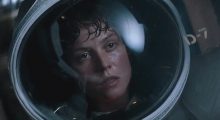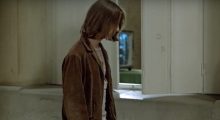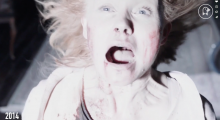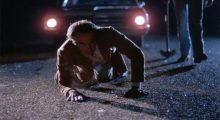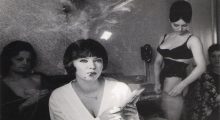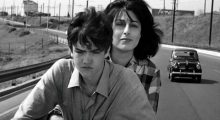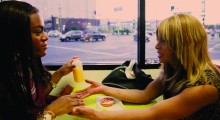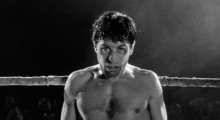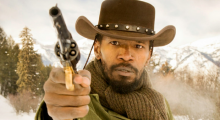Video Essay
-
Watch: Blocking as Foreshadowing in Ridley Scott’s Alien

Although this video essay by Sareesh Sudhakaran is called “How Ridley Scott Covers a Dialogue Scene,” it more accurately investigates the ways in which Scott uses blocking and perspective to foreshadow the more sinister events of his 1979 mega-hit Alien. In breaking down the three scenes set inside the Nostromo’s dining area, Sudhakaran also draws attention to the more tradition applications of blocking, via its reinforcement of the shifting power dynamics amongst the crew. Check it out above.
by Sarah Salovaara on Dec 11, 2018 -
Watch: Robert Bresson, Less is More

For the uninitiated, Robert Bresson can seem like one of the more forbidding of the all-time great directors. But his work has a visual precision, narrative economy and compelling worldview that remain absolutely transfixing today. In his latest video essay, which itself clocks in at an economical seven minutes, Julian Palmer (aka The Discarded Image) isolates and comments upon several of the most important elements of the Bressonian style, making it a great intro for beginners. If you’d like to learn more about The Discarded Image, and to possibly support further videos, check out the Patreon page.
by Scott Macaulay on Aug 7, 2017 -
“Don’t Tell Me What I Already Know”: How Steven Soderbergh Reinvents the Art of Information-Giving

“Do we understand…” How many times have the filmmakers in our audience read those words within the body of studio notes? Do we understand his or her motivation? Do we understand the stakes? Do we understand the backstory? Because moments of information-dispensing rarely provide cinema’s most thrilling, mysterious, poetic moments, they are often realized by filmmakers in the most prosaic of ways. Dialogue in a scene covered with a pretty basic sequence of shots. Let’s just get through this, you can feel the directors — and screenwriters — saying. But, as this video essay by Writing with the Camera shows, […]
by Scott Macaulay on Dec 12, 2016 -
Watch: The Look of Fear

Just in time for Halloween, Fandor shares the above video essay which analyzes how film can effectively convey fear. Spanning 1920-2014, the video highlights the best reaction shots featuring “the look of fear.” In the accompanying essay, Daniel Mcilwraith explains, “This video asks you to contemplate several questions within these faces of fear. Which gender is most burdened with the look of fear? Which is more effective: paralyzing shock or a piercing scream? I asked myself why the look of fear was so persistent in horror cinema—perhaps it can tell us more about the human face as the most powerful cinematic spectacle.”
by Paula Bernstein on Oct 26, 2016 -
Watch: How the Coen Brothers Storyboarded Blood Simple

In advance of the release of Criterion’s 4K restoration of Blood Simple, photographer Grant Delin created a video essay which compares scenes from the finished film to the original storyboards. With commentary by the Coens, cinematographer Barry Sonnenfeld, and actor Frances McDormand, this glimpse into their creative process highlights the meticulous planning and elaborate storyboards behind the film’s signature aesthetic. The restored version of the Coens’ 1984 debut feature will be available in both Blu-ray and DVD editions beginning on September 20. Find out more here. You can also watch the Coen Brothers’ pitch trailer for the low-budget classic here.
by Paula Bernstein on Sep 19, 2016 -
Watch: How the French New Wave Changed Cinema

The above video essay provides an excellent introduction to the French New Wave, which helped re-invigorate French cinema post-WWII. Spawned by Francois Truffaut, Jean-Luc Godard, Claude Chabrol, and other Cahiers du cinéma critics-turned-filmmakers, the film movement introduced the notion of the director as auteur. A collaboration by Press Play and No Film School, this video essay is the second in a series on film movements, their histories and their enduring influence. You can watch the first film in the series, on German Expressionism, here.
by Paula Bernstein on Sep 8, 2016 -
Watch: Pasolini’s Eye Contact

“The eye of the camera always manages to express the interior of a character,” according to the late filmmaker Pier Paolo Pasolini. The latest video essay (above) by Daniel Mcilwraith at Fandor meditates on Pasolini’s use of the close-up to capture the interior of his characters. “Pasolini’s faces are often confrontational, breaking the barrier between screen and spectator. There is something unnerving, yet often playful, about making eye contact with those on screen,” writes Mcilwraith. What do you see when you look into the eyes of his characters? Check out the video essay above and draw your own conclusions.
by Paula Bernstein on Aug 1, 2016 -
Watch: The Radical Beauty of Tangerine

When Tangerine was released in 2015, much of the press attention focused on the fact that it was shot entirely on an iPhone 5s. Though that technical feat is impressive, the raw beauty of the film is equally striking. Set on Christmas Eve, Tangerine follows transgender sex workers and best friends Sin-Dee (Kitana Kiki Rodriguez) and Alexandra (Mya Taylor) on an odyssey through various Los Angeles subcultures. At Fandor Keyframe, a new video essay (above) by LJ Frezza examines the film’s unique aesthetic and how director Sean Baker and DP Radium Cheung found beauty from a position of marginalization.
by Paula Bernstein on Jun 14, 2016 -
Watch: The Art of Slow Motion in Film

In the latest episode in “The Discarded Image” video essay series (above), filmmaker and video essayist Julian Palmer tackles the art of slow-motion. “The world moves at a rapid pace. Our lives slip through our fingers. We have no control of time – except, of course, if you’re a filmmaker,” intones Palmer, who adds that “filmmakers intuitively manipulate the speed of the image.” The video highlights various examples of how slow-motion is used to heighten emotion in tense or violent situations, focus in on details viewers might otherwise miss, and also how it can help “to get inside the head […]
by Paula Bernstein on Jun 8, 2016 -
Watch: Quentin Tarantino Had the Last Laugh

Laughter doesn’t immediately come to mind when you think of Quentin Tarantino’s body of work. But as video essayist Candice Drouet reveals in her latest video essay Tarantino Had The Last Laugh (above), Tarantino’s characters laugh more than you may recall….and the effect is quite menacing. The four-minute supercut features every instance a Quentin Tarantino character or the director himself laughs in one his films. The result is less hilarious than insidious as anyone familiar with the works referenced will understand the context of these laughs. More often than not, these characters are laughing at another character’s suffering or before or after they have inflicted suffering.
by Paula Bernstein on Jun 7, 2016
